Abstract
OBJECTIVES. A study of pathological gambling in five states provides information needed to address the public health threat that the expanding availability of legalized gambling poses to at-risk groups in the general population. METHODS. Over the course of this project, epidemiological data were collected to determine the prevalence of probable pathological gambling in the general population in each study state and demographic data were collected from pathological gamblers entering treatment programs in each state. RESULTS. Among the states surveyed, the availability of and involvement in gambling differ significantly, as does the prevalence of pathological gambling. Despite these differences, the demographics of pathological gamblers in these states are similar. Like those in the general population, pathological gamblers entering treatment in each state are similar. However, pathological gamblers entering treatment do not represent the full spectrum of individuals in the general population who experience gambling-related problems. CONCLUSIONS. These findings raise a number of issues, including the potential impacts of continued gambling legalization on the overall rate of gambling problems in the general population and on specific at-risk groups, including women, minorities, and children. They thus have implications for policy and program decisions now being made throughout the United States.
Full text
PDF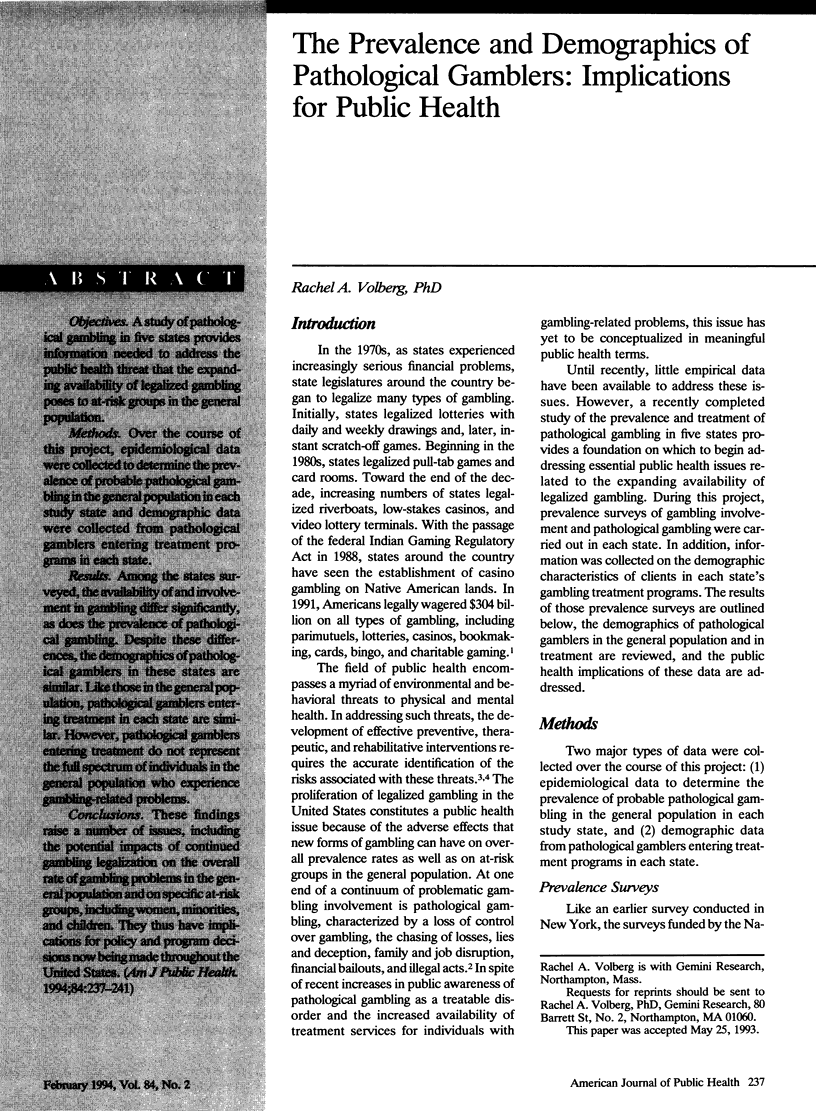
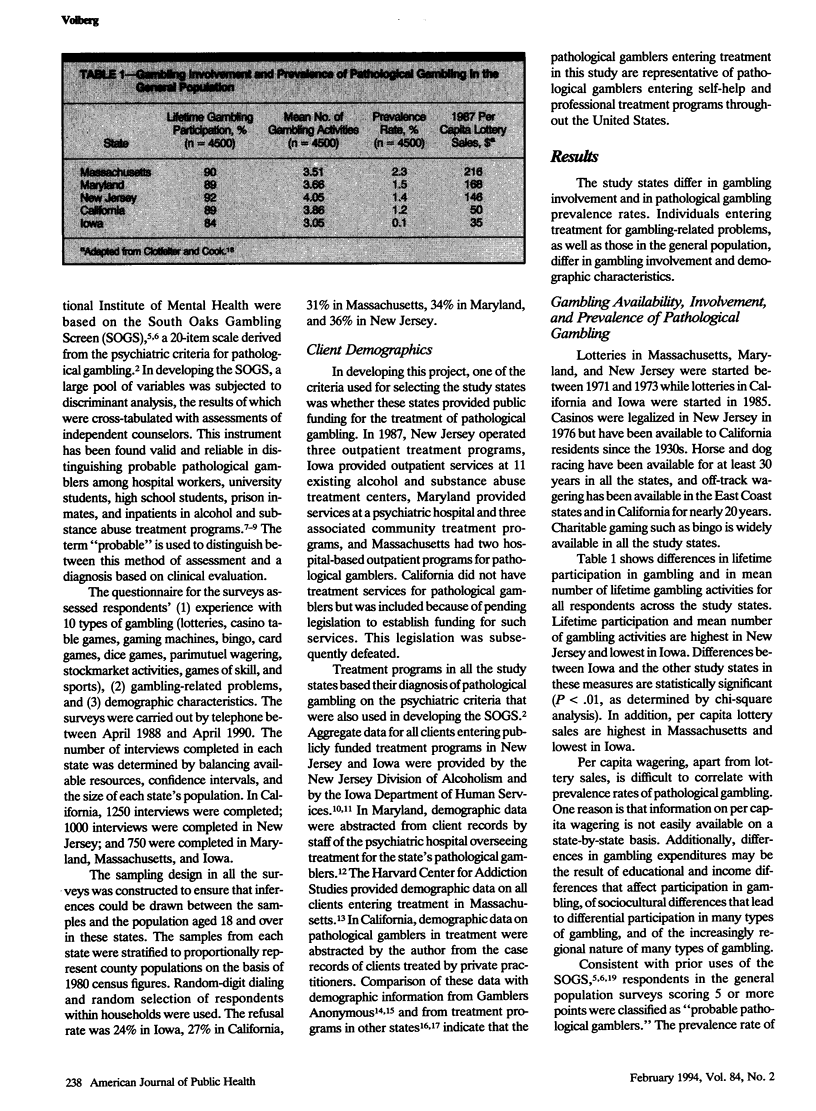
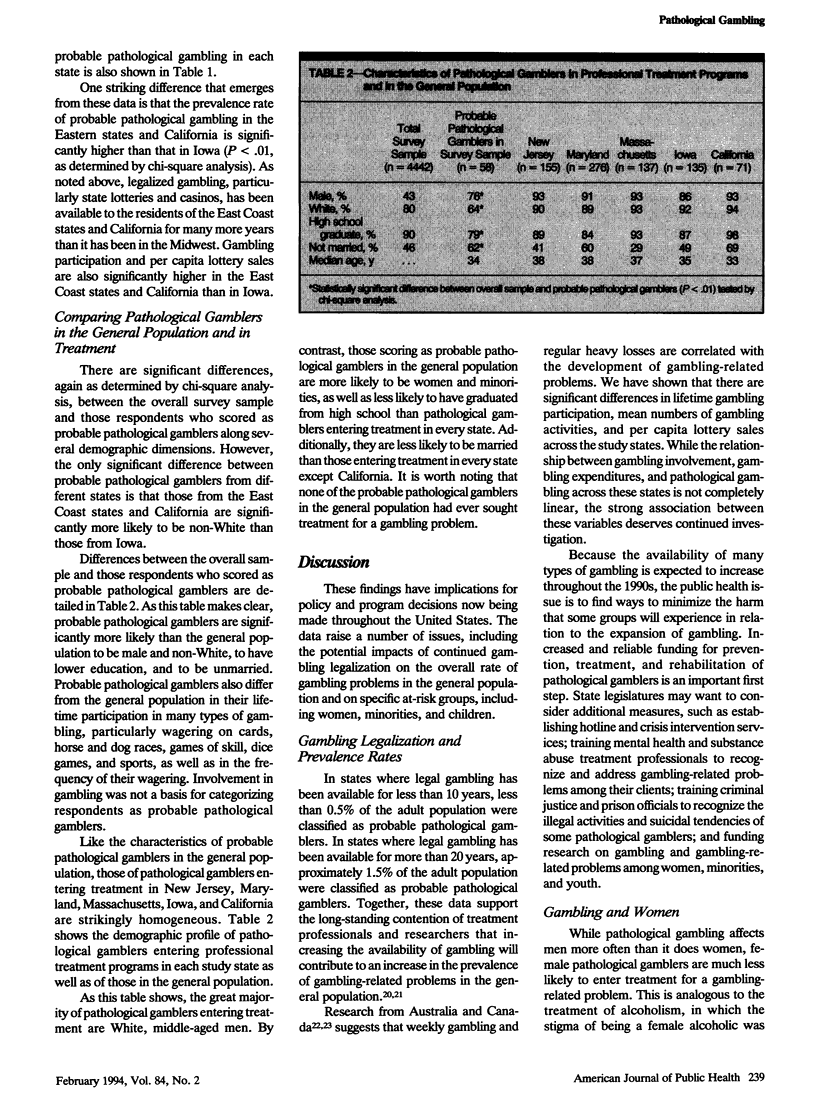
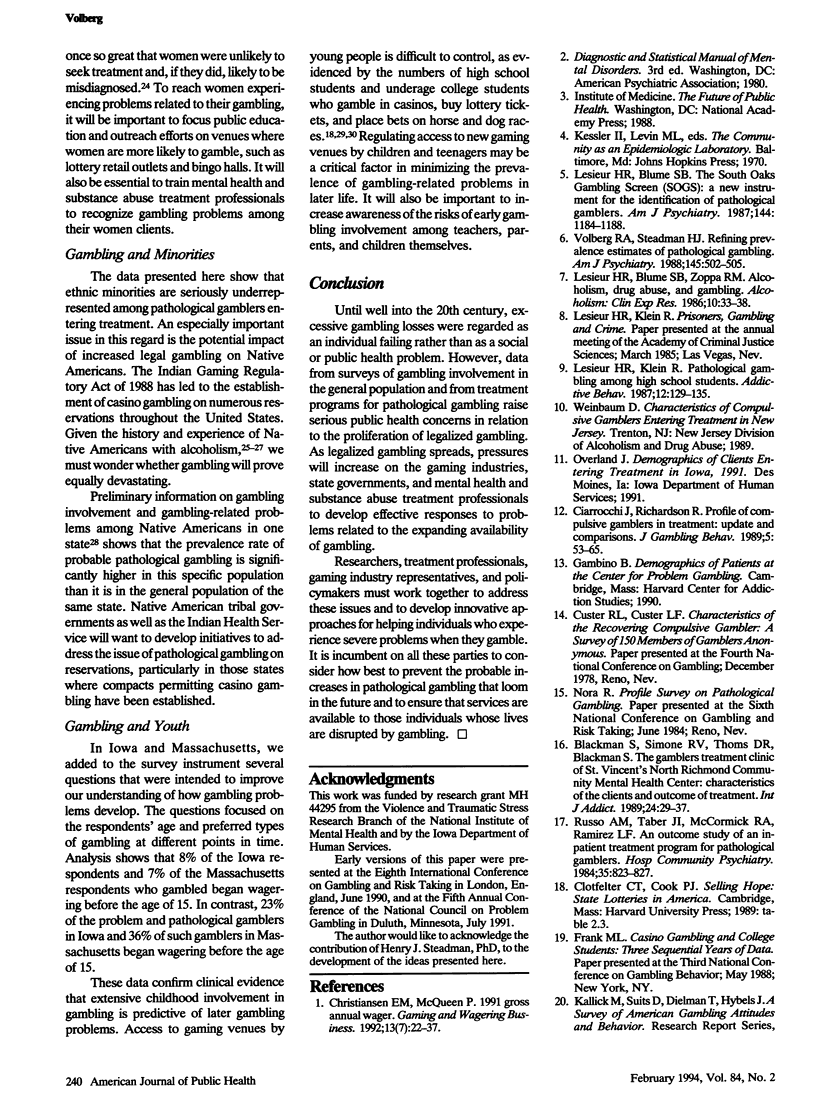
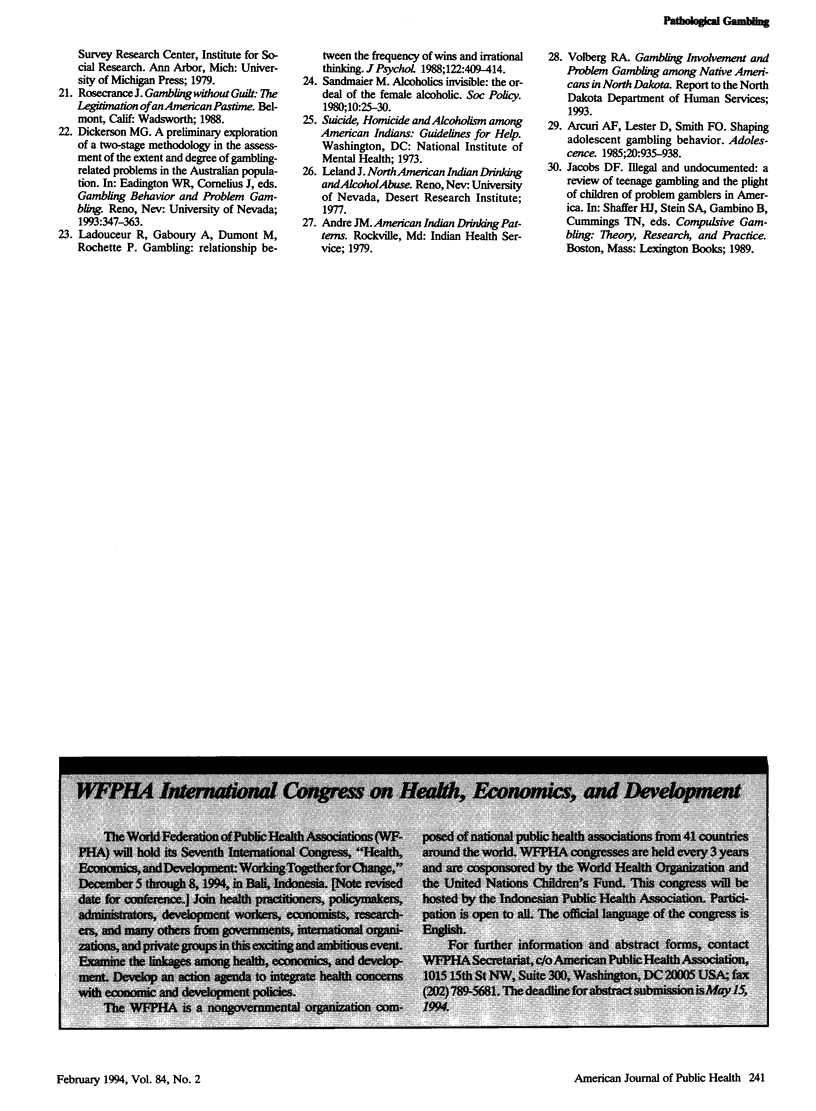
Selected References
These references are in PubMed. This may not be the complete list of references from this article.
- Blackman S., Simone R. V., Thoms D. R. The Gamblers Treatment Clinic of St. Vincent's North Richmond Community Mental Health Center: characteristics of the clients and outcome of treatment. Int J Addict. 1989 Jan;24(1):29–37. doi: 10.3109/10826088909047273. [DOI] [PubMed] [Google Scholar]
- Lesieur H. R., Blume S. B. The South Oaks Gambling Screen (SOGS): a new instrument for the identification of pathological gamblers. Am J Psychiatry. 1987 Sep;144(9):1184–1188. doi: 10.1176/ajp.144.9.1184. [DOI] [PubMed] [Google Scholar]
- Lesieur H. R., Blume S. B., Zoppa R. M. Alcoholism, drug abuse, and gambling. Alcohol Clin Exp Res. 1986 Jan-Feb;10(1):33–38. doi: 10.1111/j.1530-0277.1986.tb05610.x. [DOI] [PubMed] [Google Scholar]
- Lesieur H. R., Klein R. Pathological gambling among high school students. Addict Behav. 1987;12(2):129–135. doi: 10.1016/0306-4603(87)90019-0. [DOI] [PubMed] [Google Scholar]
- Ploeg R. J., Goossens D., Vreugdenhil P., McAnulty J. F., Southard J. H., Belzer F. O. Successful 72-hour cold storage kidney preservation with UW solution. Transplant Proc. 1988 Feb;20(1 Suppl 1):935–938. [PubMed] [Google Scholar]
- Russo A. M., Taber J. I., McCormick R. A., Ramirez L. F. An outcome study of an inpatient treatment program for pathological gamblers. Hosp Community Psychiatry. 1984 Aug;35(8):823–827. doi: 10.1176/ps.35.8.823. [DOI] [PubMed] [Google Scholar]
- Volberg R. A., Steadman H. J. Refining prevalence estimates of pathological gambling. Am J Psychiatry. 1988 Apr;145(4):502–505. doi: 10.1176/ajp.145.4.502. [DOI] [PubMed] [Google Scholar]


